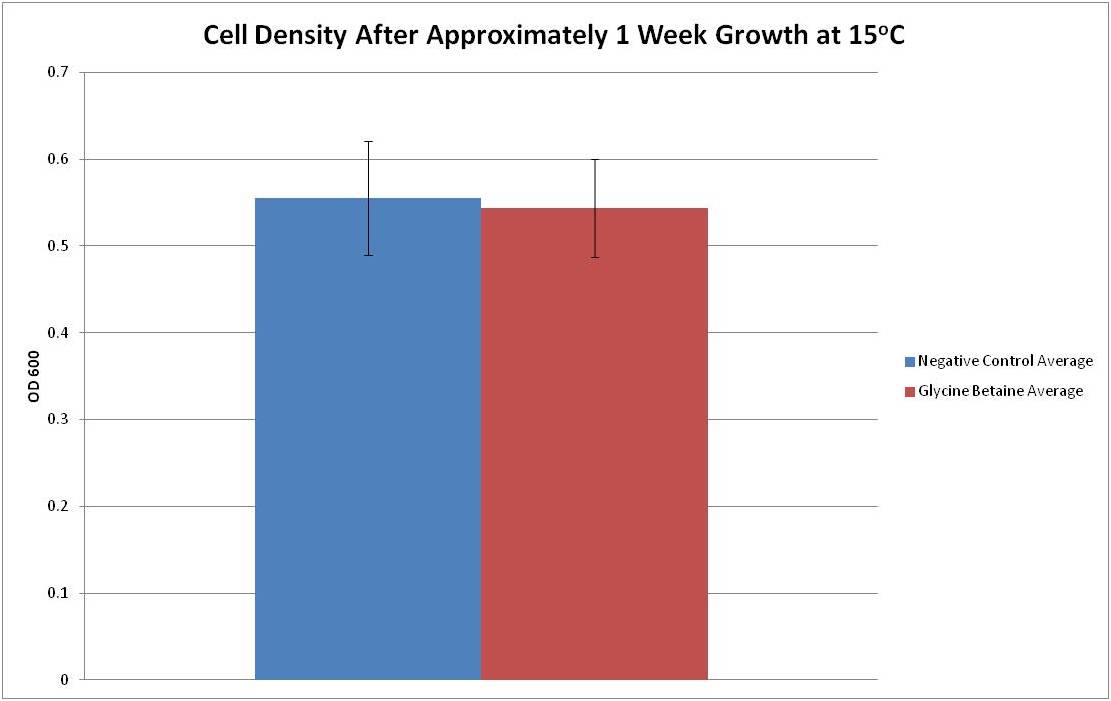Team:Stanford-Brown/HellCell/Cold
Cold
At a glance
Extremophile: Psychromonas ingrahamii
Proteins of interest: choline dehydrogenase and betaine aldehyde dehydrogenase (glycine betaine biosynthesis pathway)
Consensus: Inconclusive
There are a few main mechanisms that bacteria use to survive at low temperatures that are well-characterized. The most important two of these are (1) producing enzymes that have specific adaptations that allow them to function optimally at lower temperatures and (2) incorporating fatty acids and carotenoids in their membranes to make them more fluid and less freeze-prone (Chattopadhyay 2006). More recent research has drawn attention to bacteria’s ability to use different metabolic pathways to keep dividing exponentially at surprisingly low temperatures, upregulate the production of cold shock proteins, and conserve ATP (Chattopadhyay 2006). Transferring these mechanisms to a bacterium normally not cold-tolerant requires an almost complete overhaul of the bacterium’s metabolism, which would involve slow response times and is difficult to BioBrick due to the lengths of the genes involved. Such engineering could also potentially cause the bacterium to lose its ability to thrive in normal conditions.
More approachable methods of engineering cold-tolerant bacteria are to make them produce cryprotectants or antifreeze proteins (Chattopadhyay 2006). The Yale 2011 iGEM team made significant progress in antifreeze proteins, developing an antifreeze protein optimized for E. coli based on that of the cold-tolerant ribbed pine borer beetle (Rhagium iniquisitor), which survives on pines in Siberia. The Hell Cell squad therefore decided to explore the realm of cryoprotectants, focusing on the glycine betaine pathway found in bacteria.
Glycine betaine is a chemical that prevents the aggregation of proteins at low temperatures and facilitates the process of maintaining membrane fluidity (Chattopadhyay 2006). Psychromonas ingrahamii, an especially cold-tolerant bacteria, grows exponentially at -12° C, and it is believed that the production of glycine betaine from choline is essential for it to maintain osmotic stability at this temperature. A pathway to produce glycine betaine also natively exists in E. coli, but perhaps is not upregulated enough to afford it the cold resistance of P. ingrahamii.
Since we did not have access to P. ingrahamii, we isolated the pathway from E. coli (the genes of which have an ~86% to those of P. ingrahamii when compared using MegaBlast) and upregulated its production using the Test Plasmid strategy outlined in the introduction. The proteins of interest have identical function in the two organisms and we placed them under a new promoter, so genetic differences between E. coli and P. ingrahamii are largely irrelevant in this context.
After transforming bacteria with our test plasmid, we grew approximately equal amounts of liquid culture of the negative control (see introduction) in LB+amp at 15°C, the lower limit of E. coli’s survival range. OD measurements were taken at time points t = 0 days and t = 9 days. The data are presented below.
~Analysis of Data and Conclusions here~
Sources: Chattopadhyay, M. K. (2006). Mechanism of bacterial adaptation to low temperature. J. Biosci., 31 (1), 157-165.
Riley, M., Staley, J. T., Danchin, A., Wang, T. Z., Brettin, T. S., Hauser, L. J., Land, M. L., Thompson, L. S. (2008). Genomics of an extreme psychrophile, Psychromonas ingrahamii. BMC Genomics, 9(210), 1-19.
 "
"
